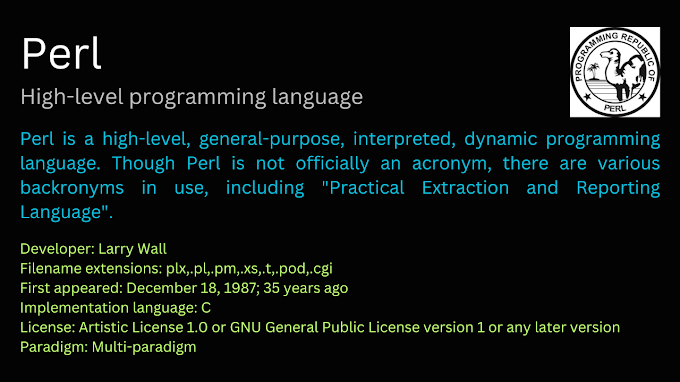Introduction
One of the essential features of any mobile application is the ability to send notifications to users. In the case of Flutter, the flutter_local_notifications package provides a comprehensive solution for handling local notifications within your application. In this article, we will explore the various aspects of the flutter_local_notifications package and outline the necessary steps to utilize its functionalities effectively.

Table Of Contents
1. Getting Started with flutter_local_notifications
- Installation and Setup
- Importing the Package
2. Configuring Notification Channels
- Understanding Notification Channels
- Creating Notification Channels
- Configuring Channel Importance and Sound
3. Displaying Basic Notifications
- Creating a Basic Notification
- Specifying Notification Title and Content
- Adding Actions to Notifications
4. Scheduling Notifications
- Understanding Scheduling Notifications
- Setting Specific Notification Date and Time
- Repeating Notifications
5. Customizing Notifications
- Adding Large Icons and Images
- Styling Notifications with Big Text
- Displaying Ongoing Notifications
6. Handling Notification Taps
- Navigating to a Specific Screen on Tap
- Extracting Notification Data
7. Managing Notification Payloads
- Attaching Additional Data to Notifications
- Retrieving Payload Data
8. Updating and Canceling Notifications
- Modifying Existing Notifications
- Canceling Individual or All Notifications
9. FAQ
1. How do I install the flutter_local_notifications package?
2. Can I schedule recurring notifications using this package?
3. Is it possible to customize the appearance of the notifications?
4. How can I handle user interaction with notifications?
5. Can I attach additional data to the notifications?
6. How do I update or cancel notifications programmatically?
10. Conclusion
Getting Started With Flutter_local_notifications
Installation And Setup
To begin using the flutter_local_notifications package, you need to add it as a dependency in your Flutter project. Open your project's `pubspec.yaml` file and add the following line under the `dependencies` section:
```yaml
dependencies:
flutter_local_notifications: ^X.X.X
```
Replace `X.X.X` with the latest version of the package available. After adding the dependency, run `flutter pub get` to fetch the package.
Importing The Package
In your Dart code, import the flutter_local_notifications package using the following line:
```dart
import 'package:flutter_local_notifications/flutter_local_notifications.dart';
```
Configuring Notification Channels
Understanding Notification Channels
Notification channels are a way to categorize and prioritize notifications on Android devices. Each channel represents a specific type of notification and can be configured individually. By using channels, you can provide users with more control over the notifications they receive.
Creating Notification Channels
To create a notification channel, you can use the `FlutterLocalNotificationsPlugin` instance and call the `AndroidNotificationChannel` constructor. Here's an example:
```dart
AndroidNotificationChannel channel = AndroidNotificationChannel(
'channel_id',
'Channel Name',
'Channel Description',
importance: Importance.high,
);
FlutterLocalNotificationsPlugin flutterLocalNotificationsPlugin =
FlutterLocalNotificationsPlugin();
await flutterLocalNotificationsPlugin
.resolvePlatformSpecific
Implementation<
AndroidFlutterLocalNotificationsPlugin>()
?.createNotificationChannel(channel);
```
Ensure that you customize the `channel_id`, `Channel Name`, and `Channel Description` according to your application's requirements.
Configuring Channel Importance And Sound
The `importance` parameter in the `AndroidNotificationChannel` constructor determines the importance level of the channel. The available options are `Importance.max`, `Importance.high`, `Importance.default`, `Importance.low`, and `Importance.min`. Choose the appropriate level based on the importance of the notifications.
To set a custom sound for the channel, you can use the `sound` property of the `AndroidNotificationChannel`. Provide the path to the sound file within your application.
Displaying Basic Notifications
Creating A Basic Notification
To display a basic notification, use the `show` method of the `FlutterLocalNotificationsPlugin` instance. Here's an example:
```dart
const AndroidNotificationDetails androidPlatformChannelSpecifics =
AndroidNotificationDetails(
'your_channel_id',
'your_channel_name',
'your_channel_description',
importance: Importance.max,
);
const NotificationDetails platformChannelSpecifics =
NotificationDetails(android: androidPlatformChannelSpecifics);
await flutterLocalNotificationsPlugin.show(
0, 'Notification Title', 'Notification Body', platformChannelSpecifics);
```
Ensure that you customize the `your_channel_id`, `your_channel_name`, `your_channel_description`, 'Notification Title', and 'Notification Body' according to your application's requirements.
Specifying Notification Title And Content
You can customize the title and content of the notification by providing the desired values in the `show` method.
Adding Actions To Notifications
The flutter_local_notifications package allows you to add actions to notifications. Actions are buttons that users can interact with directly from the notification. To add actions, create an instance of `AndroidNotificationAction` and pass it to the `AndroidNotificationDetails` constructor.
Scheduling Notifications
Understanding Scheduling Notifications
Scheduling notifications allows you to deliver them at specific dates and times in the future. This feature is useful when you want to remind users about events, deadlines, or any time-sensitive information.
Setting Specific Notification Date And Time
To schedule a notification, use the `zonedSchedule` method of the `FlutterLocalNotificationsPlugin` instance. Here's an example:
```dart
await flutterLocalNotificationsPlugin.zonedSchedule(
0,
'Scheduled Notification',
'This notification was scheduled',
scheduledDate,
const NotificationDetails(
android: AndroidNotificationDetails(
'your_channel_id',
'your_channel_name',
'your_channel_description',
),
),
androidAllowWhileIdle: true,
);
```
Ensure that you customize the `your_channel_id`, `your_channel_name`, `your_channel_description`, 'Scheduled Notification', and 'This notification was scheduled' according to your application's requirements. Also, specify the `scheduledDate` as a `tz.TZDateTime` instance.
Repeating Notifications
To schedule a repeating notification, use the `repeatInterval` parameter of the `AndroidNotificationDetails` constructor. Specify the desired interval using the `RepeatInterval` enum.
Customizing Notifications
Adding Large Icons And Images
To add a large icon or an image to a notification, use the `largeIcon` and `bigPicture` properties of the `AndroidNotificationDetails` constructor, respectively. Provide the necessary assets or image paths to customize the appearance.
Styling Notifications With Big Text
The big text style allows you to display expanded text content in a notification. To use this style, set the `styleInformation` property of the `AndroidNotificationDetails` constructor to an instance of `BigTextStyleInformation`.
Displaying Ongoing Notifications
Ongoing notifications are persistent and cannot be dismissed by the user. To create an ongoing notification, set the `ongoing` property of the `AndroidNotificationDetails` constructor to `true`.
Handling Notification Taps
Navigating To A Specific Screen On Tap
To navigate to a specific screen within your application when a notification is tapped, use the `onSelectNotification` callback of the `FlutterLocalNotificationsPlugin` instance. Implement the necessary navigation logic within the callback.
Extracting Notification Data
You can attach additional data to notifications and retrieve it when the notification is tapped. Use the `payload` parameter of the `show` or `zonedSchedule` methods to attach custom data as a string.
Managing Notification Payloads
Attaching Additional Data To Notifications
To attach additional data to notifications, use the `payload` parameter of the `show` or `zonedSchedule` methods. Pass a string that represents the data you want to associate with the notification.
Retrieving Payload Data
When a notification is tapped, you can retrieve the attached payload data using the `onSelectNotification` callback. Parse the string payload and process it accordingly.
Updating And Canceling Notifications
Modifying Existing Notifications
To update an existing notification, use the `show` method with the same notification ID. The updated notification will replace the previous one with the same ID.
Canceling Individual Or All Notifications
To cancel a specific notification, use the `cancel` method of the `FlutterLocalNotificationsPlugin` instance and provide the corresponding notification ID. To cancel all notifications, use the `cancelAll` method.
Faq
1. How Do I Install The Flutter_local_notifications Package?
To install the flutter_local_notifications package, add it as a dependency in your project's `pubspec.yaml` file and run `flutter pub get`.
2. Can I Schedule Recurring Notifications Using This Package?
Yes, you can schedule recurring notifications using the `repeatInterval` parameter of the `AndroidNotificationDetails` constructor.
3. Is It Possible To Customize The Appearance Of The Notifications?
Yes, you can customize the appearance of the notifications by providing custom icons, images, and styles.
4. How Can I Handle User Interaction With Notifications?
You can handle user interaction with notifications by implementing the `onSelectNotification` callback and defining the desired logic.
5. Can I Attach Additional Data To The Notifications?
Yes, you can attach additional data to the notifications using the `payload` parameter of the `show` or `zonedSchedule` methods.
6. How Do I Update Or Cancel Notifications Programmatically?
To update an existing notification, use the `show` method with the same notification ID. To cancel notifications, use the `cancel` method with the corresponding ID or the `cancelAll` method to cancel all notifications.
Ending
In this article, we explored the various functionalities of the flutter_local_notifications package in Flutter. We learned how to configure notification channels, display basic and scheduled notifications, customize notification appearance, handle user interaction, manage notification payloads, and update or cancel notifications programmatically. By utilizing the flutter_local_notifications package effectively, you can enhance the user experience of your Flutter applications by incorporating local notifications.




0 Comments
Welcome! Please Comment Without Any Hesitation.
Thank You